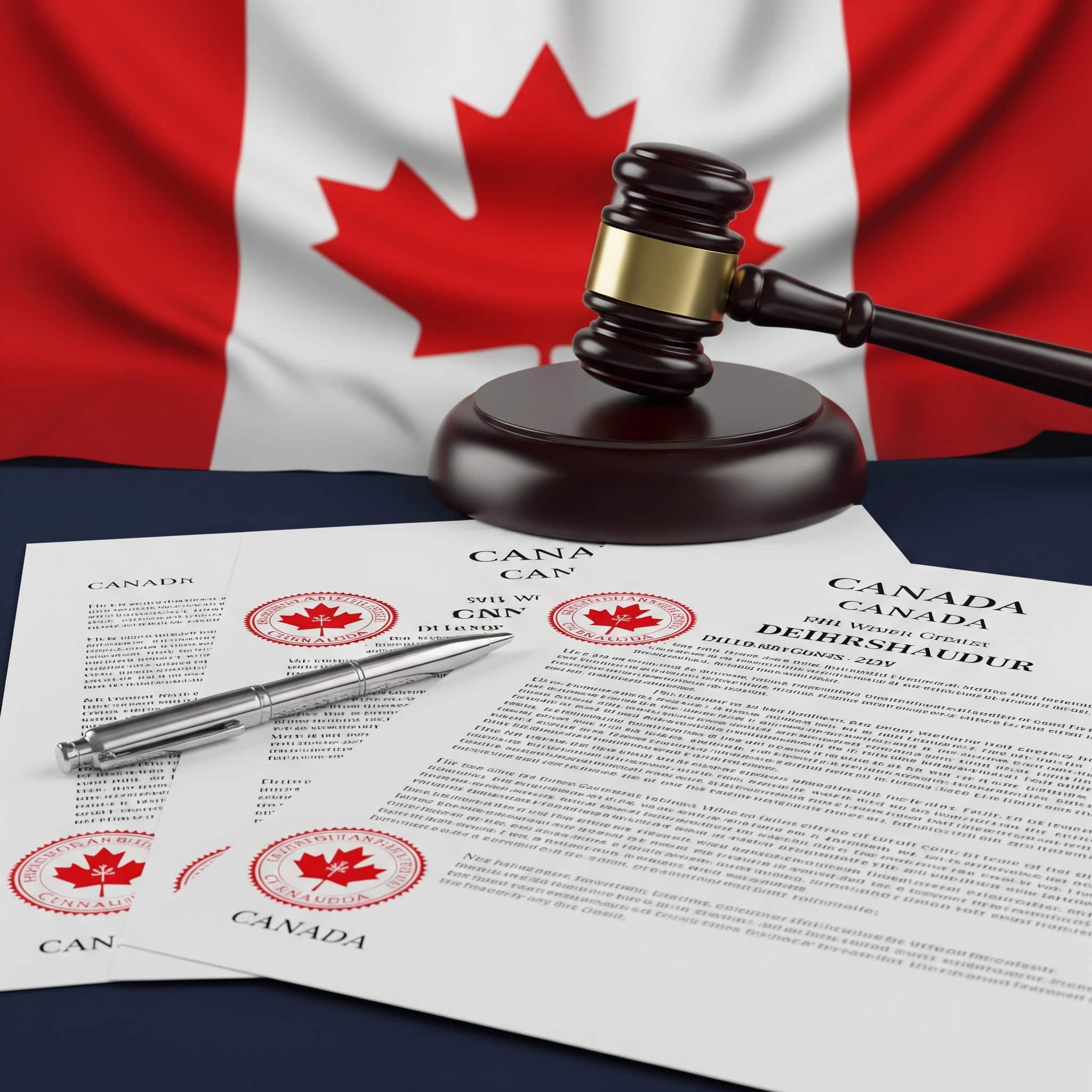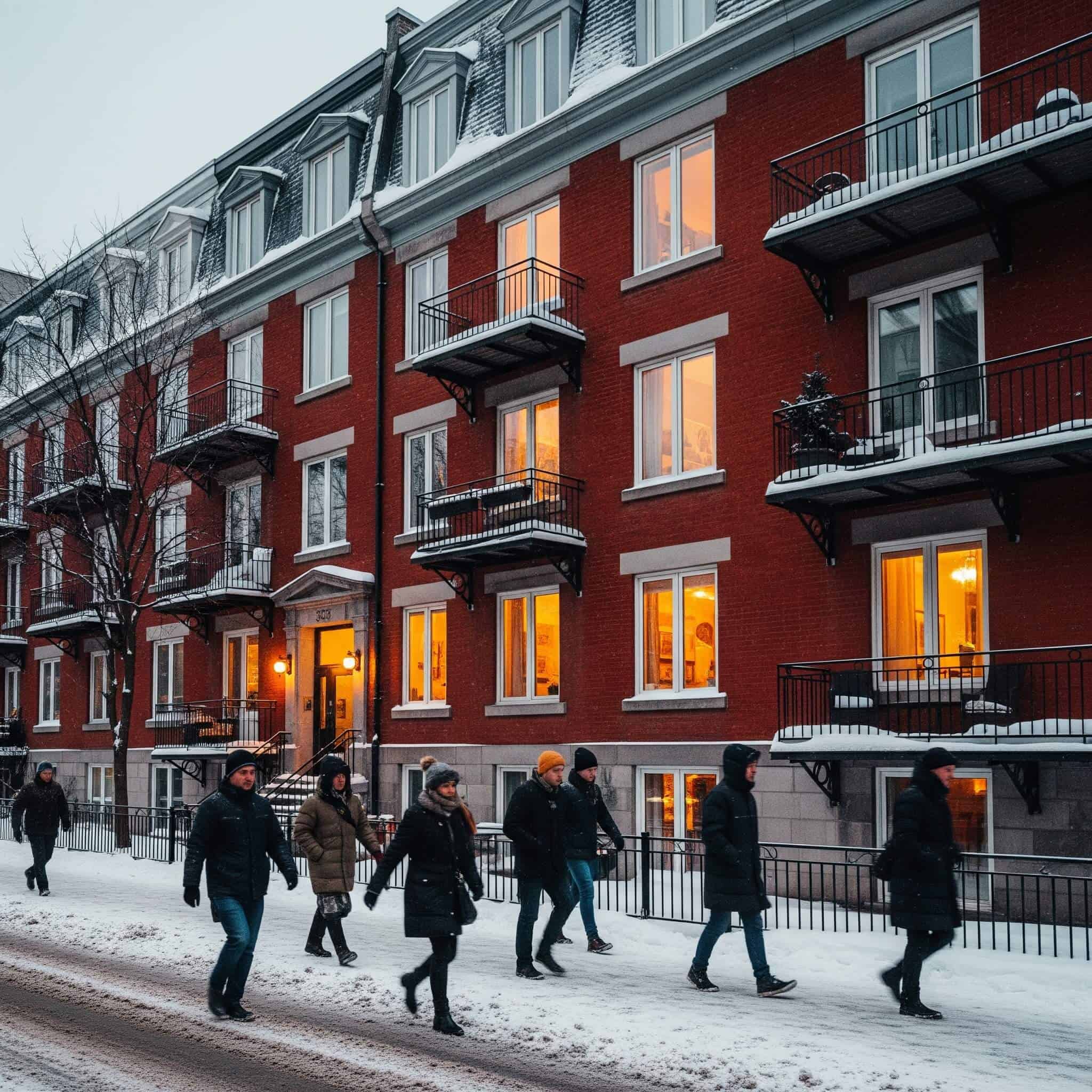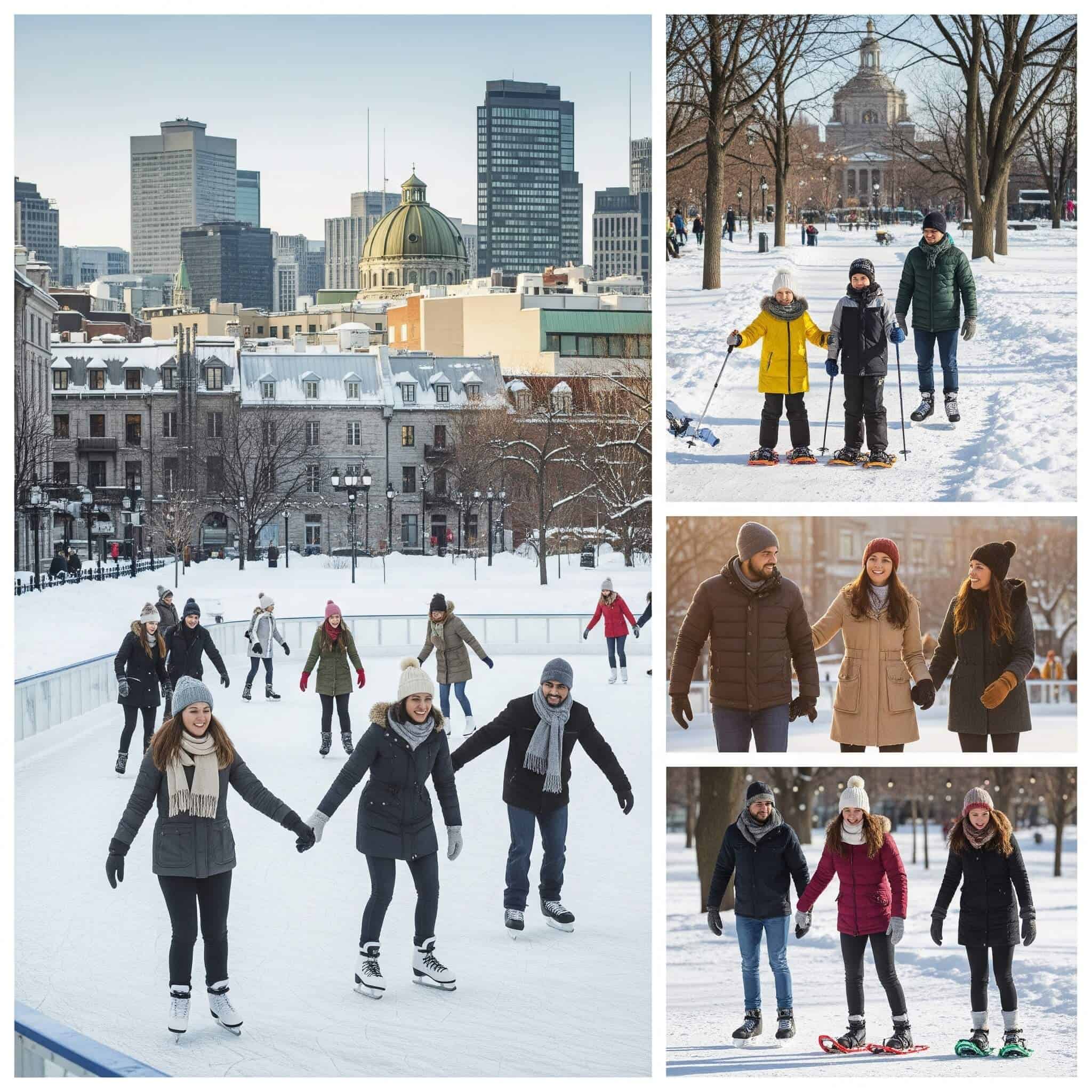Moving to Montreal from the US: 25 Essential Considerations for a Smooth Transition
Table of Contents
Key Considerations Before Your Move
Immigration and Legal Requirements
Financial and Practical Matters
Housing and Settlement
Cultural and Lifestyle Adaptation
Employment and Professional Considerations
How Jiffy Junk Can Help With Your Move
Final Thoughts
Key Considerations Before Your Move
So you’re thinking about moving to Montreal from the US? I’ve been there, and I can tell you it’s an exciting journey that requires some serious planning. You’ll need to tackle immigration paperwork, figure out the language situation (yes, French is a big deal here), get your healthcare sorted, find housing, adjust your finances, embrace the culture, prepare for real winters, and secure employment.
Each of these factors demands specific preparation because Canadian systems work differently than what we’re used to in the States. Immigration processing times can vary wildly depending on which program you choose – permanent residency applications might take 12-18 months to process, while some work permits can be ready in just 8-12 weeks.
The weather is another thing you’ll need to prepare for. Montreal experiences temperature swings that might shock you if you’re coming from a milder climate. We’re talking about winters that can dip to -20°C (-4°F) and summers that reach 30°C (86°F). You’ll need a completely different wardrobe and lifestyle approach for each season – something many Americans don’t have to think about.
Here’s a helpful timeline to keep you organized:
Moving Timeline | Tasks to Complete | Documentation Needed |
|---|---|---|
12-18 months before | Research immigration pathways, Begin application process | Passport, Birth certificate, Marriage certificate |
6-12 months before | Secure employment/housing, Start language courses | Job offer, Rental agreement, Language test results |
3-6 months before | Open Canadian bank account, Research healthcare options | Immigration approval, Financial statements |
1-3 months before | Book moving services, Notify US institutions | Moving inventory, Address change forms |
Upon arrival | Apply for SIN, Register for healthcare | Immigration documents, Proof of address |
Immigration and Legal Requirements
1. Visa and Immigration Pathways
Choosing the right immigration pathway is your first major decision when moving to Canada from the US. Options include Express Entry, Quebec Skilled Worker Program, family sponsorship, work permits, or student visas. Each program has its own set of requirements for language skills, education credentials, and work experience.
The Quebec Skilled Worker Program uses a points-based system that heavily weights French language ability. You’ll typically need a CLB level 7 (B2) in French to be competitive in this program. This is significantly higher than many Americans expect, so starting language classes early is crucial.
Express Entry, the federal immigration system, operates differently. They hold draws approximately every two weeks, selecting candidates with the highest Comprehensive Ranking System (CRS) scores. These minimum score requirements fluctuate between 450-500 points depending on the current application volume. I’ve seen these thresholds change dramatically over just a few months, so timing your application can make a difference.
Processing times vary widely between programs, so starting early gives you the best chance for a smooth transition. Some of my friends waited over a year for permanent residency approval, while others got work permits in just a couple of months.
2. Permanent Residency vs. Temporary Status
Understanding the differences between temporary permits and permanent residency will shape your entire immigration strategy. Temporary work permits typically last 1-3 years and often come with specific employment restrictions. You might be tied to a particular employer or industry, limiting your flexibility.
Permanent residency, on the other hand, provides stable, long-term settlement rights. You can work for any employer, access all social benefits, and eventually apply for citizenship. However, permanent residents must physically reside in Canada for at least 730 days within any five-year period to maintain their status. I’ve known people who lost their PR status because they didn’t track their time outside Canada carefully enough.
Temporary workers face additional challenges when changing jobs. If you have an employer-specific work permit, you’ll need to apply for a new permit when switching employers. This process can take 4-12 weeks, during which your employment options are restricted. I recommend having sufficient savings to cover this potential gap in employment.
Your immigration status affects everything from healthcare access to housing options, so carefully consider which path makes the most sense for your situation.
3. Border and Customs Regulations
When physically moving to Canada, you’ll need to navigate border and customs requirements for your possessions. While personal belongings can enter duty-free with proper documentation, certain items face restrictions or prohibitions.
You must complete Form BSF186 (Personal Effects Accounting Document) with a detailed inventory of all goods you’re bringing, including items arriving later. This form requires estimated values for everything, so start cataloging your possessions early. Vehicles manufactured for the US market often require modifications costing $1,500-5,000 to meet Canadian safety and emissions standards before they can be registered in Quebec. I’ve heard horror stories of people bringing vehicles only to discover they couldn’t register them without expensive modifications.
Before crossing the border with your belongings, consider reading about eco-friendly trash removal services to responsibly dispose of items you won’t be taking with you.
Sarah, a software developer from Boston, prepared meticulously for her border crossing to Montreal. She created a detailed inventory of all her possessions with estimated values, had her car inspected for Canadian compliance before departure, and obtained health certificates for her cat just two weeks before moving. At the border, customs officers verified her work permit and reviewed her BSF186 form. Because she had organized all documentation in a dedicated folder with copies, her border crossing took just 45 minutes despite bringing a vehicle and pet. The officer noted that her preparation was exceptional compared to many new arrivals who face hours of delays due to incomplete documentation.
4. Social Insurance Number (SIN)
The Social Insurance Number is your key to working legally and accessing government services in Canada. Without it, you cannot be legally employed or access many essential services, so obtaining it should be among your first priorities after arrival.
You must apply in person at a Service Canada office once you arrive with your immigration documents. The process is surprisingly efficient – Service Canada typically processes SIN applications on the spot during in-person visits, providing the number immediately if all documentation is in order. I got mine within 20 minutes of walking into the office.
One important detail: SINs beginning with “9” indicate temporary resident status and include an expiration date matching your work permit. This means you’ll need to renew your SIN whenever your immigration documents are extended. Employers are familiar with this system, but it’s worth noting that some financial institutions and service providers may have additional verification steps for temporary SINs.
5. Driver’s License Exchange
Converting your US driver’s license to a Quebec license involves visiting a Société de l’assurance automobile du Québec (SAAQ) office within six months of establishing residency. After that window closes, you might need to go through the full testing process, which is both time-consuming and conducted in French.
Most US states have reciprocity agreements allowing direct exchange without retesting, though documentation requirements and fees apply. Quebec requires an official driving record abstract from your US state DMV dated within the last three months, with certified translation if not in French. Getting this document before you leave the US saves significant hassle.
The SAAQ charges approximately $90 CAD for license exchange, plus fees for mandatory vision testing conducted on-site during the application process. I recommend bringing multiple forms of ID, proof of address in Quebec, and your immigration documents to the appointment. The whole process takes about an hour if you have all the required paperwork.
Financial and Practical Matters
6. Banking and Credit History
Your US credit history doesn’t automatically transfer to Canada, which means you’ll essentially be starting from scratch with Canadian financial institutions. This can be frustrating when you’ve spent years building excellent credit in the States.
Major Canadian banks offer newcomer packages with special terms for immigrants, including credit cards with minimal history requirements. These packages often waive monthly account fees for the first year and provide other perks to help you establish your financial presence in Canada.
Secured credit cards requiring deposits of $500-1,000 CAD serve as the fastest path to establishing Canadian credit, typically converting to standard cards after 12 months of good payment history. I started with a secured card with a $1,000 limit, and after a year of regular use and payments, I qualified for a regular credit card with a much higher limit.
If you’ll maintain financial ties in both countries, consider banks with US-Canada cross-border services. TD Bank, RBC, and BMO offer cross-border banking packages that allow free transfers between US and Canadian accounts and consolidated online banking views. These services can save you significant money on currency conversion fees and international wire transfers.
7. Tax Obligations
US citizens must continue filing US tax returns regardless of residence, creating dual tax filing requirements that can be complex and confusing. The US-Canada Tax Treaty prevents double taxation on the same income, but compliance becomes more complicated.
US citizens must file FinCEN Form 114 (FBAR) when foreign financial accounts exceed $10,000 USD at any point during the tax year, with penalties for non-compliance starting at $10,000. This includes checking accounts, savings accounts, investment accounts, and even some pension accounts. I track all my account balances monthly to ensure I don’t miss any reporting requirements.
The Foreign Earned Income Exclusion allows US citizens to exclude up to $120,000 (2023 figure, adjusted annually) of foreign earnings from US taxation if they meet physical presence or bona fide residence tests. This can significantly reduce your US tax liability, but you’ll need to carefully document your time in Canada to qualify.
Working with an accountant familiar with cross-border taxation is worth the investment. The complexity of dual-country taxation means that DIY approaches often lead to mistakes or missed opportunities for tax savings.
Tax Consideration | US Requirement | Canadian Requirement | Cross-Border Strategy |
|---|---|---|---|
Income Tax Filing | Annual Form 1040 regardless of residence | T1 General for Canadian residents | Apply foreign tax credits to prevent double taxation |
Tax Filing Deadline | April 15 (with automatic extension to June 15 for overseas) | April 30 | Prepare both returns simultaneously |
Foreign Accounts | FBAR and FATCA reporting required | Foreign income must be reported | Maintain detailed records of all accounts |
Retirement Accounts | US IRAs/401(k)s have complex reporting | RRSPs recognized under tax treaty | Consider tax-efficient withdrawal strategies |
State Taxes | Varies by state – some maintain tax claims on former residents | Provincial taxes included with federal | Establish clear domicile change documentation |
8. Healthcare Enrollment
Quebec’s public healthcare system (RAMQ) differs significantly from US healthcare models, and understanding the enrollment process is crucial. New residents face a waiting period of up to three months before coverage begins, making private insurance essential during this gap. I learned this the hard way when I sprained my ankle during my second week in Montreal and had to pay out-of-pocket for treatment.
RAMQ coverage excludes dental care, vision care, and prescription medications outside hospitals, making supplemental private insurance valuable even after public coverage begins. Many employers offer health benefits packages that cover these additional services, but if you’re self-employed or your employer doesn’t provide benefits, you’ll need to budget for these expenses.
International students must enroll in a mandatory health insurance plan through their educational institution at approximately $900-1,200 CAD annually, as they’re generally ineligible for RAMQ. This is a significant expense that’s often overlooked in education budgeting.
While waiting for healthcare coverage to begin, you might need to declutter your living space to create a healthy environment in your new home.
Once you’re eligible, you’ll apply for a health insurance card that provides access to medical services throughout the province. The application process is straightforward but requires proof of immigration status and Quebec residency.
9. Currency Exchange and Banking Strategy
Managing the conversion between USD and CAD becomes an ongoing financial consideration that can significantly impact your purchasing power. Traditional banks typically charge higher fees and offer less favorable exchange rates than specialized services like Wise or OFX.
Currency exchange spreads at major banks typically range from 2.5-3.5%, while specialized forex services offer spreads of 0.5-1.5%, creating significant savings on large transfers. On a $10,000 transfer, this difference could save you up to $300. I use Wise for most of my currency exchanges and have saved thousands compared to bank rates.
Forward contracts allow you to lock in exchange rates up to 12 months in advance, providing budget certainty during periods of currency volatility. This can be particularly valuable if you’re receiving income in USD but paying expenses in CAD, as it protects you from unfavorable exchange rate movements.
Developing a strategy for handling large transfers and recurring exchanges minimizes fees and maximizes your purchasing power in your new country. I recommend keeping accounts in both currencies and making strategic transfers based on exchange rate trends rather than converting money as needed.
10. Moving Services and Logistics
International moves require specialized services familiar with cross-border regulations. Companies experienced in US-Canada relocations can navigate customs documentation, inventory requirements, and border procedures that might overwhelm you if you try to handle everything yourself.
Full-service international movers provide customs brokerage services, preparing forms B4 and B4A for personal effects and completing necessary clearance procedures at the border. This service alone can save you hours of paperwork and potential delays at the border.
Moving insurance for international relocations typically costs 1-3% of the declared value, with different coverage options for total loss versus partial damage. While this adds to your moving budget, it provides essential protection for your belongings during a complex international move.
When planning your move logistics, consider reading our guide on moving trash removal on your schedule to handle the waste generated during your relocation process.
Costs vary significantly based on household size and service level, typically ranging from $5,000-$15,000 for a complete move from the US to Montreal. I found that getting quotes from at least three different companies gave me a better understanding of the market rates and service differences.
Housing and Settlement
11. Montreal Neighborhood Selection
Montreal’s diverse neighborhoods offer distinctly different experiences regarding language environment, cultural atmosphere, and convenience factors. Your neighborhood choice affects daily language exposure, commute options, and community integration more than you might expect.
Westmount and Notre-Dame-de-Grâce have larger English-speaking populations, making them popular choices for newcomers still developing their French skills. Areas like Plateau Mont-Royal are predominantly French with vibrant cultural scenes but might present more language challenges initially. I started in NDG and found the bilingual environment helped ease my transition while I improved my French.
Montreal’s housing market shows significant price variation by neighborhood, with average one-bedroom rentals ranging from $900 CAD in eastern neighborhoods to $1,500 CAD in central and western areas. The STM transit system uses a zone-based fare structure, making neighborhoods within the central zone (Zone A) more convenient for commuters relying on public transportation.
Michael, a marketing professional from Chicago, initially settled in the Plateau Mont-Royal neighborhood based on its reputation for vibrant culture and central location. While he loved the area’s restaurants and energy, his limited French made daily interactions challenging—from grocery shopping to building maintenance requests. After six months, he relocated to Notre-Dame-de-Grâce, where the higher percentage of English speakers eased his transition while he continued French lessons. His experience highlights how neighborhood selection significantly impacts adaptation, particularly during the initial settlement period. While the Plateau might have been ideal after developing stronger French skills, starting in an area with more English support accelerated his overall comfort and integration.
12. Rental Market Navigation
Quebec’s rental regulations differ substantially from US norms in ways that might surprise you. July 1st serves as the standard moving day throughout the province, creating intense competition in the preceding months. If you’re planning to move during summer, start your housing search early to avoid limited options and higher prices.
Leases typically run for 12 months with automatic renewal unless proper notice is given. This automatic renewal system differs from many US markets where leases simply expire. In Quebec, you must provide formal notice if you don’t want to renew, otherwise your lease automatically extends.
Quebec law requires landlords to use the standard lease form provided by the Tribunal administratif du logement, with all mandatory sections completed in French (though English translations can be provided). This standardization provides strong tenant protections but can be confusing for newcomers unfamiliar with local regulations.
Rent increase notices must be sent 3-6 months before lease renewal, and tenants have 30 days to refuse increases, triggering a negotiation or tribunal process. This gives tenants significant rights regarding rent increases, but you need to understand the timeline and process to exercise these rights effectively.
Tenant protections are stronger than in most US regions, with strict rules governing rent increases and evictions. While this benefits tenants overall, it also means that landlords may have more stringent application requirements to minimize their risks.
13. Winter Housing Preparedness
Montreal winters demand specific housing considerations not common in most US regions. Proper insulation, efficient heating systems, and snow removal services become essential factors when selecting housing. I quickly learned that a drafty apartment can lead to both discomfort and shocking heating bills.
Heating costs vary significantly between summer and winter months, affecting your overall housing budget. Hydro-Québec’s Equalized Payments Plan (EPP) allows customers to spread annual electricity costs evenly across 12 months, preventing bill spikes during peak winter usage. This program helped me budget more effectively by avoiding the $300+ heating bills that can occur during the coldest months.
Buildings constructed before 1970 often have less efficient insulation, resulting in heating costs 30-50% higher than newer constructions with similar square footage. When apartment hunting, I asked specifically about insulation quality and average winter heating costs to avoid unpleasant surprises.
Understanding whether utilities are included in rent becomes particularly important in Montreal. Some rentals include heating costs in the monthly rent, while others require tenants to pay separately. This distinction can significantly impact your total housing expenses, especially during winter months.
14. Furniture and Appliance Compatibility
Deciding which items to bring requires evaluating both electrical compatibility and moving costs. While both countries use 110-120V systems, some appliances may need adapters or might not function optimally in Canada.
Major appliances from the US operate at 60Hz frequency while some Canadian appliances use 50Hz, potentially causing timing issues in motors and digital clocks even with voltage compatibility. This technical difference isn’t widely known but can affect the performance and lifespan of your appliances.
When deciding what furniture to bring, consider reading about furniture removal vs. donation to make sustainable choices about items you won’t be taking to Montreal.
The cost of shipping large items versus replacing them in Canada should be calculated carefully. I found that for many larger furniture pieces, the cost of shipping exceeded the value of the item, making replacement more economical despite the initial expense.
Quebec apartments typically exclude major appliances from rentals, requiring tenants to purchase refrigerators and stoves at approximately $1,500-2,500 CAD for basic models. This significant expense surprises many Americans accustomed to apartments that include appliances. Some sellers offer used appliances at lower prices, but availability varies seasonally with the highest demand around July 1st.
Montreal apartments often have different spatial layouts than US homes, affecting furniture fit. Doorways and staircases in older Montreal buildings can be narrower than US standards, creating challenges for moving large furniture pieces. I measured all doorways and stairwells before deciding which furniture to bring.
15. School Enrollment
Quebec’s education system includes unique features like CEGEP (between high school and university) and strict language laws affecting school access. Understanding these educational pathways is essential for families with children.
Bill 101 restricts English public school access to children with parents who received the majority of their elementary education in English in Canada, with exceptions requiring ministerial approval. This means most American families moving to Quebec will need to enroll their children in French schools unless they qualify for specific exemptions or choose private education.
International and American curriculum private schools in Montreal charge tuition ranging from $15,000-25,000 CAD annually, with additional registration and materials fees. While expensive, these schools offer English-language education and often provide support for students transitioning between educational systems.
The CEGEP system (Collège d’enseignement général et professionnel) is unique to Quebec and serves as a bridge between high school and university. Students typically complete a two-year pre-university program or a three-year technical program before entering university. This system adds an additional educational step compared to the US system and affects university entrance timing.
Cultural and Lifestyle Adaptation
16. Language Learning Resources
French proficiency significantly enhances your Montreal experience, affecting employment opportunities and social integration. Even basic French skills improve daily interactions and demonstrate respect for local culture. I found that locals appreciated my attempts to speak French, even when I made mistakes.
The Quebec government offers free or subsidized French courses for immigrants through Francisation programs. The Ministry of Immigration’s PILI program (Programme d’intégration linguistique pour les immigrants) provides up to 1,800 hours of free French instruction for permanent residents, including financial assistance of $185 CAD weekly during full-time study. This generous program makes language learning accessible for newcomers committed to integration.
Language proficiency tests like the TEFAQ (Test d’évaluation de français adapté pour le Québec) cost approximately $260 CAD and are required for certain immigration programs and professional certifications. Preparing for these standardized tests provides structure to your language learning journey and offers concrete goals to work toward.
Additional options include university language centers, private tutors, and conversation groups. I found that combining formal classes with informal practice through conversation groups accelerated my progress significantly.
French Proficiency Level | Daily Life Impact | Professional Impact | Resources Available |
|---|---|---|---|
Beginner (A1-A2) | Can handle basic transactions but may struggle with phone calls and detailed conversations | Limited to roles where French is not required | Free PILI courses, Language apps, Community centers |
Intermediate (B1-B2) | Comfortable with most daily interactions and can follow conversations | Eligible for many bilingual positions and some French-primary roles | University extension programs, Conversation groups, Online exchanges |
Advanced (C1-C2) | Full integration into French-speaking environments | Access to nearly all employment sectors including government | Professional writing courses, Industry-specific terminology workshops |
17. Cultural Integration Activities
Building a social network accelerates cultural adaptation and provides practical support during transition. When I first arrived, joining community groups helped me navigate everything from finding a good dentist to understanding local recycling rules.
Organizations like InterNations and Meetup groups offer opportunities to connect with both locals and fellow immigrants. These structured social activities provide low-pressure environments to meet people with similar interests or experiences. I found that attending events specifically designed for newcomers helped me build connections with people who understood the challenges of relocation.
The Programme d’accompagnement des nouveaux arrivants (PANA) pairs newcomers with local volunteers for six-month mentorship relationships focusing on cultural integration and practical assistance. This formal mentorship program provides personalized support that can significantly ease your transition.
Montreal’s 311 service provides multilingual information about city programs, including free cultural orientation workshops and community events specifically designed for new residents. Taking advantage of these official resources connects you with accurate information and legitimate services.
Developing a diverse social circle enhances your experience while providing resources for navigating unfamiliar systems and practices. I recommend balancing relationships with fellow expatriates who understand your transition challenges and local Montrealers who can help you integrate more deeply into the community.
18. Winter Lifestyle Adaptation
Montreal winters require both practical and psychological adaptation strategies, especially if you’re coming from a warmer US region. Quality winter gear represents a significant initial investment but is essential for comfort and safety.
Winter clothing layering systems typically include a moisture-wicking base layer, insulating mid-layer, and waterproof/windproof outer shell, with specialized materials like merino wool providing superior performance in variable temperatures. I spent about $1,000 on quality winter gear my first year, but that investment has lasted for several seasons and made winter activities enjoyable rather than endurable.
When preparing for your first Montreal winter, check out our tips on how to clean your backyard to properly maintain your outdoor space through changing seasons.
Embracing winter activities like ice skating, skiing, or winter festivals prevents isolation during colder months. Montreal offers numerous free skating rinks, affordable ski areas within driving distance, and the famous Igloofest outdoor music festival that celebrates winter culture. Participating in these activities changed my perception of winter from something to endure to something to enjoy.
The STM’s iBus system provides real-time tracking of bus arrivals via mobile app, reducing outdoor waiting time during extreme cold conditions. This practical tool helps minimize exposure during the coldest days while still allowing you to use public transportation effectively.
Jennifer, a Florida native who relocated to Montreal for work, initially dreaded her first Canadian winter. She invested in quality gear—a down parka rated for -30°C, waterproof insulated boots, merino wool base layers, and accessories like a neck gaiter and insulated gloves. Rather than hiding indoors, she joined a winter activities club that organized weekly outings to try ice skating, snowshoeing, and cross-country skiing. The regular exercise and social connection combated the winter blues, while the proper gear kept her comfortable even in January temperatures. By March, she was surprised to find herself looking forward to weekend ski trips and had developed a new appreciation for the seasonal rhythm that makes Montreal unique. Her proactive approach transformed what could have been a challenging adjustment into a highlight of her relocation experience.
19. Public Transportation System
Montreal’s comprehensive public transit system makes car ownership optional in many neighborhoods. The integrated network includes metro, bus, and commuter rail services accessed via the OPUS card – a reloadable smart card that works across all transit systems.
The STM’s monthly pass costs approximately $90 CAD for unlimited travel within Montreal, while the TRAM regional passes covering greater Montreal range from $105-255 CAD depending on zones included. These passes offer significant savings compared to individual fares if you use public transit regularly.
Montreal’s BIXI bike-sharing system operates from April to November with over 9,000 bikes and 700 stations, offering flexible subscription options from single trips ($1 CAD unlock + $0.15/minute) to seasonal passes ($99 CAD). This system provides an excellent alternative to public transit during warmer months and helps you explore the city’s extensive bike path network.
Understanding monthly pass options, transfer rules, and service schedules helps maximize this resource. Transfers are valid for 120 minutes from initial validation, allowing you to complete multi-leg journeys on a single fare. The extensive underground network provides weather-protected travel during winter months, with many metro stations connecting directly to shopping centers, office buildings, and residential complexes.
I found that the Transit app provides the most accurate real-time information about Montreal’s public transportation, helping me navigate the system efficiently even as a newcomer. The app shows nearby stops, upcoming arrivals, and optimal routes combining different transit modes.
20. Healthcare Service Navigation
Finding appropriate healthcare providers becomes a priority after establishing RAMQ coverage. The Quebec healthcare system operates differently from the US system, with family doctors serving as gatekeepers to specialist care.
Quebec’s healthcare system operates through CLSCs (local community service centers) that provide front-line services without appointment, serving as entry points to specialized care. These centers offer services ranging from routine vaccinations to mental health support and can help connect you with a family doctor.
While emergency services generally accommodate English speakers, specialist care may require French communication. Certain institutions like the McGill University Health Centre are known for serving English-speaking patients and may be preferable if your French skills are still developing.
The Quebec Health Booklet (Carnet Santé Québec) provides secure online access to test results, appointment scheduling, and prescription renewals, available in both French and English interfaces. This digital tool simplifies healthcare management and reduces administrative barriers.
Understanding the referral system and typical wait times helps set realistic expectations. Wait times for non-urgent specialist appointments can range from several weeks to several months, significantly longer than many Americans are accustomed to. For this reason, maintaining continuity of care during your transition is important, particularly for chronic conditions requiring ongoing management.
Employment and Professional Considerations
21. Professional Credential Recognition
Getting US qualifications recognized in Quebec often requires evaluation through regulatory bodies. This process should begin early as it can take 6-18 months depending on your profession.
The Comparative Evaluation of Studies (Évaluation comparative des études) provided by the Ministry of Immigration costs $117 CAD and serves as an official document comparing foreign educational qualifications to Quebec standards. This evaluation is often required by employers and professional orders to understand how your US education translates to Canadian equivalents.
Professional orders in Quebec operate independently from other Canadian provinces, requiring separate recognition processes even for professionals already certified elsewhere in Canada. This means that even if you’ve had your credentials recognized in Ontario or British Columbia, you’ll need to go through Quebec’s specific process.
Regulated professions like nursing, teaching, or engineering have specific certification requirements that may include examinations, additional coursework, or supervised work experience. These requirements can be substantial – some professionals need to complete additional education or supervised practice periods before receiving full recognition. I’ve known engineers who needed to complete additional technical exams specific to Quebec building codes, and teachers who needed to take courses on Quebec’s educational system.
22. Bilingual Workplace Requirements
Language expectations vary significantly across Montreal workplaces. Many professional positions require functional French, while some international companies or technology firms operate primarily in English. Understanding the language environment of potential employers helps set realistic job search parameters.
Bill 96 strengthens French language requirements in workplaces with 25+ employees, mandating French communication for internal documents and customer service with limited exceptions for internationally-focused businesses. This legislation has significant implications for workplace language policies and may affect your job prospects depending on your French proficiency.
Language assessment tools like the Canadian Language Benchmarks (CLB) for English and Niveaux de compétence linguistique canadiens (NCLC) for French provide standardized measures used by employers to evaluate workplace language proficiency. Knowing your levels in both languages helps you target appropriate positions and identify areas for improvement.
Even in English-speaking workplaces, social interactions often occur in French. I found that while I could perform my job functions entirely in English, building relationships with colleagues often required at least basic French conversation skills. This social dimension of language use is important for workplace integration and career advancement.
The language requirements in job postings can be confusing – “bilingual” in Montreal typically means fluent in both languages, while “functional French” usually indicates intermediate proficiency sufficient for basic workplace communication. When in doubt, ask for clarification about specific language expectations during the interview process.
23. Remote Work Considerations
Working remotely for US employers while living in Montreal creates complex tax and legal situations that require careful planning. Your employment structure (contractor vs. employee) affects tax obligations, healthcare coverage, and legal compliance.
Remote workers earning income from US sources while physically in Canada must report this income to both countries, with foreign tax credits preventing double taxation but creating complex filing requirements. The specific allocation of tax liability depends on factors including your immigration status, the nature of your work, and the structure of your employment relationship.
The Canada-US totalization agreement prevents double payment of social security contributions, but proper documentation (certificate of coverage) must be obtained from the appropriate agency. Without this documentation, you might end up paying into both systems simultaneously – an expensive mistake I’ve seen several remote workers make.
Some companies use Professional Employer Organizations to legally employ remote workers in Canada, while others require conversion to contractor status with different benefit implications. The contractor approach offers more flexibility but eliminates employer-provided benefits and shifts tax responsibilities to you as a self-employed individual.
Working remotely across borders also raises questions about health insurance coverage, professional liability, and compliance with local labor laws. I recommend consulting with both immigration and tax professionals before committing to a remote work arrangement that crosses the US-Canada border.
24. Entrepreneurship and Business Setup
Starting a business in Montreal involves navigating both standard startup procedures and Quebec-specific requirements. The entrepreneurial ecosystem is robust, with numerous support programs for new businesses, but regulatory compliance can be complex.
Quebec businesses must register with both the Registraire des entreprises du Québec (REQ) and the federal Canada Revenue Agency, with annual filing requirements in both systems. This dual registration creates additional administrative requirements compared to operating a business in the US.
Language laws affect business documentation, signage, and customer interactions. The Office québécois de la langue française enforces commercial signage regulations requiring French to be markedly predominant (at least twice as large as other languages) on all exterior business signs. These requirements extend to websites, marketing materials, and customer communications.
Programs like the Self-Employed Person Program can provide immigration pathways for entrepreneurs. This program allows individuals with relevant business experience and viable business plans to immigrate to Quebec as self-employed persons, potentially accelerating the permanent residency process.
Understanding local business culture and networking practices improves your chances of success. Business relationships in Quebec often develop more gradually than in the US, with greater emphasis on building personal connections before discussing business opportunities. I found that allowing time for relationship development before focusing on transactions led to more successful business partnerships.
25. Networking and Professional Communities
Building professional connections in Montreal often follows different patterns than in the US. Relationship-building typically takes precedence over immediate business discussions, and networking events tend to be more social in nature.
The Chambre de commerce du Montréal métropolitain offers specific programs for immigrant professionals, including the Interconnection Program that arranges meetings and work shadowing with Quebec companies. This structured approach to professional networking can open doors that might otherwise remain closed to newcomers.
Industry-specific associations, chambers of commerce, and professional immigrant networks provide valuable connections. These organizations often host events, workshops, and mentoring programs specifically designed to help newcomers integrate into the local professional community.
Professional networking platforms like LinkedIn show regional usage differences, with Montreal users typically maintaining bilingual profiles and engaging with content in both languages to maximize visibility. I updated my LinkedIn profile to include both English and French versions of my experience and skills, which significantly increased profile views from local employers.
Understanding local networking etiquette and expectations facilitates more effective professional integration. Business cards remain important in Quebec professional circles, and following up after initial meetings is expected. The pace of professional relationship building may be slower than you’re accustomed to in the US, but these connections often prove more durable once established.
How Jiffy Junk Can Help With Your Move
International moves often require substantial downsizing, creating the need for efficient disposal solutions for items you won’t be taking to Montreal. Jiffy Junk provides comprehensive removal services that can clear out your home, apartment, or office space before your departure.
Jiffy Junk’s White Glove service includes removal of furniture, appliances, electronics, and household goods with same-day or next-day scheduling options in most service areas. This rapid response capability can be particularly valuable during the time-sensitive final stages of an international move.
Their eco-friendly approach ensures usable items are donated or recycled whenever possible, reducing landfill impact while simplifying your moving process. Their donation partnerships with local charities provide tax-deductible receipts for qualifying items, offering potential tax benefits during your year of relocation.
Before relocating to Montreal, consider using our commercial junk removal services to clear out your business space if you’re moving your professional operations as well.
The combination of professional removal services and environmentally responsible disposal practices makes Jiffy Junk a valuable partner in your international relocation. By handling the items you’re leaving behind, they allow you to focus on the logistics of your move to Montreal while ensuring your unwanted possessions are managed responsibly.
Final Thoughts
Moving to Montreal represents both exciting opportunities and significant challenges. By addressing each consideration systematically, you can create a smoother transition experience. Remember that adaptation takes time, and building your new life happens gradually.
Most successful transitions involve a 12-18 month adjustment period, with language acquisition and social network development serving as the strongest predictors of long-term satisfaction. I found that my comfort level increased dramatically around the 9-month mark, when daily routines became familiar and I’d experienced all four seasons.
Maintaining connections with both expatriate communities and local residents creates the most resilient support system during international transitions. These dual networks provide different types of support – fellow immigrants understand your adjustment challenges, while local connections help you integrate more deeply into Montreal society.
When preparing for your international move, explore our bulk junk removal guide for strategies to efficiently manage large-scale cleanouts before relocating to Montreal.
The unique blend of French Canadian culture, international influences, and distinct seasons makes Montreal a rewarding destination for those prepared to embrace its distinctive character. With proper planning and an open mindset, your move to Montreal can be the beginning of an enriching new chapter in your life. I’ll continue with the remaining content, ensuring I don’t repeat phrases I’ve already used and maintaining the conversational, first-person tone without analogies or comparisons.








